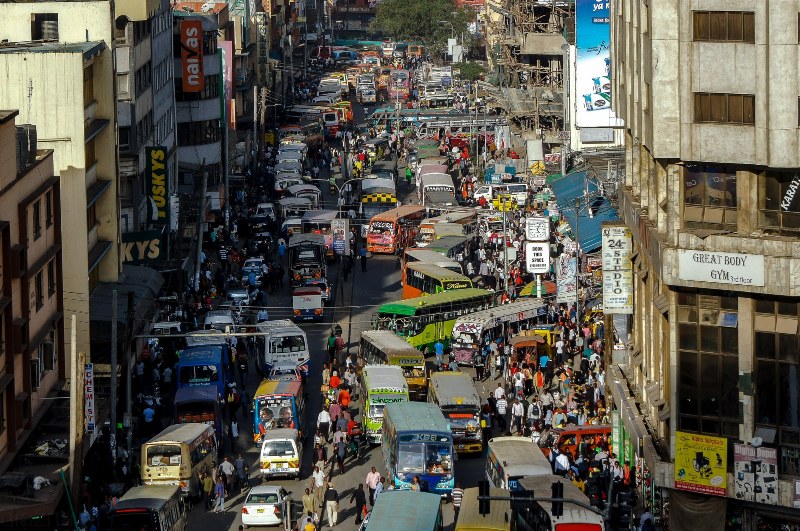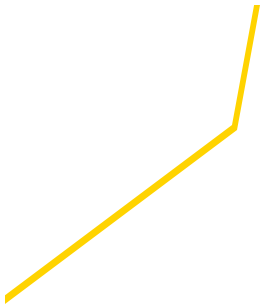


The COVID-19 pandemic has resulted into a health, economic and social emergency since it blew into a global proportion in March 2020.
While acknowledging that the overall impact has been universal, with global poverty on the rise for the first time in 20 years and inequality on the rise, developing countries like those in Africa face greater recovery challenges due to inadequate resources.
Overall, the IMF estimates that low-income countries alone need an estimated US$200 billion between 2021-25 for effectively responding to the COVID-19 health crisis, financial and infrastructural development needs. Moreover, the costs are expected to span decades, according to a recent study by the United Nations Development Programme (UNDP) study on the long-term effects of the pandemic on African economies. The IMF had also estimated earlier that an additional US$528 billion were needed to make substantial progress towards the SDGs in five areas (education, health, roads, electricity, water and sanitation) in low-income developing countries by 2030. On top, these developing face the challenge of adequately investing in climate change adaptation and mitigation estimated to cost US$800 billion per year in the next decade.
Particularly focusing on Africa, both the International Monetary Fund (IMF) and the African Development Bank (AfDB) forecast a sharp decline in aggregate growth because of the global health crisis. Africa is set to experience its first recession in about two decades. Economies of the continent are heavily dependent on external flows that emanate from countries hit hard by the pandemic. Those flows include trade in oil and other commodities, foreign direct investment, remittances, development aid, and tourism. For instance, African countries that depend on tourism are expected to experience growth declines in the double digits. Many of Africa’s traditional donors are also reeling from the pandemic and unlikely to commit or disburse additional resources.
With the pandemic still ravaging, Africa stands to incur the most serious economic and social consequences due to the pandemic. Disparities related to COVID-19 have started widening between wealthy and poor countries in relation to vaccine access, as of the end of April 2021, less than 2 percent of Africa’s population had been vaccinated and by contrast, over 40 percent of the population in the United States and over 20 percent in Europe had received at least one dose of the vaccine. It is estimated that the African continent is going to need between US$ 8 and 21 billion to ensure that at least 60 percent of its population is vaccinated.
Africa’s Rising Debt
In Africa, the devastation caused by the COVID-19 pandemic has added to other circumstances, which have kept Africa down for long. One of these is the problem of the rising debts. Alarm bells were already ringing about Africa’s rising debt levels before the Covid-19 pandemic struck. The pandemic has worsened Africa’s preexisting external debt vulnerability. Before the pandemic, 20 African countries were already classified as in external debt distress or at high risk of debt distress. The IMF report (2020), projected the debt levels in Sub-Sahara could rise from 58 percent of the value of all they produce (GDP) in 2019 to 64 percent in 2020. The World Bank predicts that the average debt of many Sub-Saharan African countries will hit a peak of 67.4 percent in 2021. In 2020, even relatively natural resource-rich countries like Zambia had estimated government debt of 120 percent of GDP, Angola (120.3 percent) and the Republic of Congo (104.5 percent). Worse still, Zambia started defaulting on its Eurobond in October 2020. Africa’s debt problems are no longer hidden in the boardrooms of high government circles, as citizens are beginning to take action as the loans are not being used well.
Even those African countries that reflect low debt-to-GDP ratios have other debt obligations locally. For example, failure of governments to pay local suppliers form part of the debt obligation. They are also damaging to the countries’ productive systems and delaying economic recovery. Domestic arrears have become an increasing source of forced financing in sub-Saharan Africa. These domestic arrears have a negative impact on growth through multiple channels, including hurting the profitability of the private sector and stressing the banking sector. By undermining trust in government, arrears can even reduce fiscal policy effectiveness. Furthermore, African countries have state-owned enterprises, some of which have become public liabilities and sometimes accumulate debt without much control and transparency.
Africa’s Growing Challenge of Illicit Financial Flows (IFFs)
Africa has continued to suffer from illicit financial flows orchestrated by individuals and corporations, further resulting into resource scarcity in her countries. This has caused a combined estimated capital flight or resource haemorrhage of about $88.6 billion annually from Africa. Of this total, illicit financial out-flows of at least $40 billion are linked to the extractive industry, in which high-value, low-weight commodities like gold, diamond, platinum contribute as leading drivers in illicit trade outflows. A cumulative total of about $1.2 to $1.4 trillion is estimated to have been lost from 1980-2009. The illicit financial flows amount to around 6.1 percent of the continent’s entire gross domestic product (GDP) - or three times what Africa receives in aid. Corporations and private individuals in Africa contribute to these illicit outflows of the much-needed revenue through tax exemptions, engineering a greater proportion of these out-flows (60-65 percent) through commercial transactions. These losses mainly occur due to dodged taxes and trade malpractices, taking money that should ideally contribute to the domestic revenue for public expenditures.
Are the Proposed Special Drawing Rights the Solution to Save Africa?
In order to help countries build back better, the IMF proposed US$650 billion allocation of Special Drawing Rights (SDRs). The SDRs are an international reserve asset, created by the IMF in 1969, to supplement its member countries’ official reserves when in need for financial support. They are useful in improving a country’s savings and creditworthiness, can be exchanged for hard currency through a system of swaps managed by the IMF through its Articles of Agreement, and can be converted and used to pay for public goods and services. Since SDRs allocation provides each recipient country with a costless asset, which does not create new debt and can be used by countries with no policy conditionality, they would be a welcome alternative for the debt laden African countries. Amidst the scholarly and policy debate, the SDRs now offer the most efficient and effective way to provide the additional resources African countries so desperately need.
The downside is that the distribution of SDRs still reproduces the inequalities of the global financial system, as they are allocated in proportion to IMF members’ quotas, and are heavily skewed towards rich countries (around 67 percent), while low income countries only get around 1 percent. And currently, there are no mechanisms that would compel rich countries to transfer free of cost their SDRs to poorer countries. Certainly, the pandemic has created immense needs in all the countries, but the needs of the poor countries, such as those in Africa are now greater. Considering the current IMF proposal for SDRs allocation, Sub-Saharan Africa would receive around US$22 billion. Vera Songwe, executive secretary of the United Nations Economic Commission for Africa, says African nations expect to receive $33.6 billion from a new issuance of Special Drawing Rights. On the other hand, Africa’s total public debt service amounts to US$37 billion. With a lack of adequate and timely measures to address the debt crisis faced by developing countries, most of these additional resources provided by the SDRs are likely to end up being used to meet debt service. Creditors of countries at high risk of debt distress stand to profit handsomely, while populations in need may not receive any benefit of the said SDRs.
An increased allocation of SDRs could have a profound financial and psychological effect across the African continent. In addition to strengthening reserves positions, it will revitalise economic growth, and boost confidence in the private sector. This could also help to fund vaccine initiatives, which Africa governments are targeting about 60 percent of the population by the first half of 2022. More than 250 organisations and academics are asking the IMF and the G20 to support a larger allocation. The G-7 finance ministers agreed to support a “sizeable” increase in the International Monetary Fund’s special drawing rights (SDRs) to help provide additional resources to IMF member countries to help to fight the pandemic. A discussion is also ongoing on how developed countries’ unused SDRs could be redistributed to poor countries. The outcomes of all these is yet to be seen.
Which Way Africa
The SDRs scenario illustrates yet another of those circumstances in which the international financial architecture favours the rich countries. African governments should therefore deliberately seek to engage in negotiating for better terms and policies for the international financial system. A proper joint articulation of the historical, economic and social contexts would set the ground for better outcomes. For instance, with a global financial system so fortified, how can Africans ever get compensated for historical ills like the slave trade, resource grabbing and labour exploitation that occurred during the mercantile and colonial era? If fairly favourable options like the SDRs are guided by policies that are favourable to countries in the developing world, the impact of past acts of injustice and current equality could be redressed. On the part of African countries, strengthening regional fiscal rules and councils to advise governments and coordinate their fiscal policies would contribute towards the unity required for joint action.
Apart from improving domestic resource mobilisation, additional resources obtained from the SDRs should be better allocated toward productive investments through a combination of better macro policies. This also calls for African countries to formulate and implement regulations and policies to address corruption and illicit flow of funds that have a huge impact on the way public resources are being used in the various African countries.
And the Catholic Church in Africa?
The Catholic Church elsewhere, like the U.S. Conference of Catholic Bishops has already joined other organisations to advocate for a much higher allocation of $3 trillion SDRs. From a human centred view, the SDRs can be life-saving. The current global health crisis and the resultant deepening world recession has killed and is likely to kill millions of people around the world, especially the developing countries. SDRs, if used well, can provide governments in Africa with vital resources to take necessary action against the devastatingly lethal impact of COVID-19. The Catholic Church preaches a message for saving life in its totality, body and soul. It strives for integral human development of the person. The Church in Africa is therefore called upon to join with other organisations to advocate for and shape the policies around the planned SDRs, and influence how they will be distributed in a fair and equitable way. The Church can add a voice of morality and ethics. Besides, the grassroots establishment of the church makes it better placed to see the impact of some of these ivory tower policies and decisions.
Related Articles
Select Payment Method
Pay by bank transfer
If you wish to make a donation by direct bank transfer please contact Fr Paul Hamill SJ treasurer@jesuits.africa. Fr Paul will get in touch with you about the best method of transfer for you and share account details with you. Donations can be one-off gifts or of any frequency; for example, you might wish to become a regular monthly donor of small amounts; that sort of reliable income can allow for very welcome forward planning in the development of the Society’s works in Africa and Madagascar.
Often it is easier to send a donation to an office within your own country and Fr Paul can advise on how that might be done. In some countries this kind of giving can also be recognised for tax relief and the necessary receipts will be issued.

